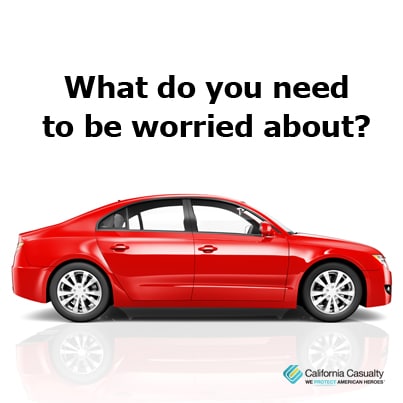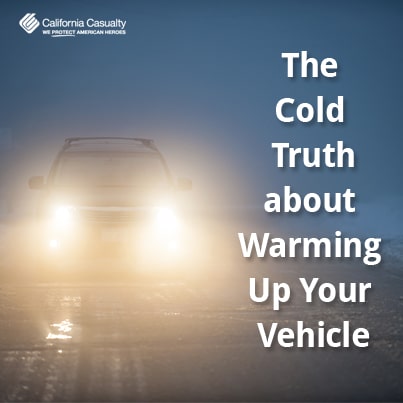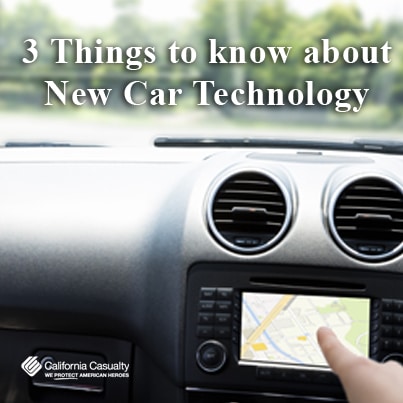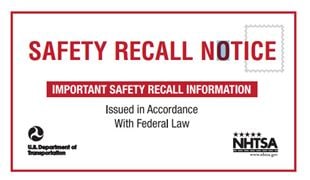by California Casualty | Auto Insurance Info |
We wouldn’t allow our children to play with an unsafe toy, nor would we use a household item that was deemed dangerous. But, when it comes to our autos and trucks, many Americans continue driving one that has been recalled because of a safety concern.
It’s More Than You Might Think
The statistics are a bit unsettling – the number of recalled vehicles reached 51 million in 2015, second only to 2014’s record of 60 million vehicles.
What do you need to be worried about?
Auto experts say the bulk of the recalls are for faulty airbags, which have been linked to injuries and deaths. However, other recalls were for hazards involving steering, cruise control, engines and seat belts. These failures have led to sudden loss of control of the vehicle, parts failures in a crash, or caused vehicle fires.
Many Are Not Getting Fixed
Despite a major effort by automakers, only 75 percent of vehicles that might have issues are being looked at or repaired.
And that’s the concern; a recent Carfax survey found that tens of millions of vehicles that have been recalled the past few years have never been fixed. By their estimate, one in five on the roads today is in need of a repair for a safety defect. Even more troubling is that the type of vehicle with the highest rate of unfixed safety issues is a family-owned minivan. SUVs and pickup trucks are a close second and third. Often, this means the drivers of those cars or trucks, maybe someone you know, is at significant risk if a part should fail.
So Why Wouldn’t Someone Get the Fix?
There are many reasons why drivers aren’t getting defective vehicles to a dealer or mechanic:
- They are not aware of the recall
- They worry it will take too much time or cost too much
- They just don’t care
- Recall notices are often mailed to an old address
- So Has Your Vehicle Been Recalled?
The government maintains an excellent website where you can check, for free:
https://www.safercar.gov/CheckForRecalls
If you find your vehicle on the recall list, safety groups recommend that you contact the car dealer immediately to set up an appointment to have it looked at. Keep in mind, you should not have to pay for any parts or labor because of a recall. Not all vehicles may need a fix, but finding out will bring you peace-of-mind. And, if you think your vehicle has a defect, but hasn’t been recalled yet, save any receipts; you should be reimbursed if the recall occurs later.
What Does a Recall Mean for My Insurance?
While driving a recalled vehicle shouldn’t affect your insurance, the quicker you have it checked out or repaired, the safer you and others will be.
However, you should contact your insurance company if the dealer gives you a loaner car while yours is being repaired; you’ll want to verify that you have the right coverage..
by California Casualty | Auto Insurance Info |
If you’ve gotten a new recall notice about a dangerous airbag, you are not alone. The National Highway Traffic Safety Administration (NHTSA) is warning that 51 million vehicles had some recall in 2015. That follows the record 60 million the year before.
Most of these recalls involve Takata equipped airbags. As of April 2016, ten deaths in the U.S. have been attributed to the defective airbag inflator that can send dangerous shards of metal at drivers and passengers. Of the 24 million U.S. vehicles recalled for the problem, only 7 million have had the inflators replaced. Many auto makers, including Honda, are redoubling their efforts to notify consumers about the recall, dating back to 2013.
Be prepared that when you take your car or truck in to fix the problem, it could take weeks or even months until the parts arrive. Many automotive dealers are offering temporary rentals or loaner vehicles until the work is complete. If you get that offer, here are some insurance issues you need to know.
- Your personal auto insurance policy should transfer to that temporary vehicle, but with the same deductibles and limits contained in that policy. If you have an older car or truck without coverage for damage from a collision or hail, flood, etc. (comprehensive and collision), the temporary car you are using does not have that coverage either. Unless you add that it, you will be paying out of pocket to replace or fix the loaner if you cause a crash. You might also want to make sure you have uninsured/under-insured motorist coverage.
- Most insurance companies don’t pay for “loss of use” for a rental vehicle. If you damage the car or are involved in an accident, you can be charged for the time it takes to repair and have it available for rent again. Rental companies will usually charge you the daily rate they lost while that car or truck is getting repaired, plus administrative fees. That’s why you want to negotiate with the dealer for loss of use coverage; otherwise, you may want to purchase it through the agency providing the vehicle.
- You should not drive your recalled vehicle while you have a “loaner” vehicle. Doing so could void the need for that temporary vehicle, and crash with either vehicle may not be covered.
- To speed up any claims and avoid miscommunication, contact your insurance company to let them know you are using a temporary vehicle and provide the year, make, model and vehicle identification number.
You can find additional information, including how to check if your car has been recalled by clicking here.
by California Casualty | Auto Insurance Info |

We wouldn’t allow our children to play with an unsafe toy, nor would we use a household item that was deemed dangerous. But, when it comes to our autos and trucks, many Americans continue driving one that has been recalled because of a safety concern.
It’s More Than You Might Think
The statistics are a bit unsettling – the number of recalled vehicles reached 51 million in 2015, second only to 2014’s record of 60 million vehicles.
What do you need to be worried about?
Auto experts say the bulk of the recalls were for faulty airbags, which have been linked to injuries and deaths. However, other recalls were for hazards involving steering, cruise control, engines and seat belts. These failures have led to sudden loss of control of the vehicle, parts failures in a crash, or caused vehicle fires.
Many Are Not Getting Fixed
Despite a major effort by automakers, only 75 percent of vehicles that might have issues are being looked at or repaired.
And that’s the concern; a recent Carfax survey found that tens of millions of vehicles that have been recalled the past few years have never been fixed. By their estimate, one-out-of-five vehicles on the roads today is in need of a repair for a defect. Even more troubling is that the type of vehicle with the highest rate of unfixed safety issues is a family-owned minivan. SUVs and pickup trucks are a close second and third. Often, this means the drivers of those cars or trucks, maybe someone you know, is at significant risk if a part should fail.
So Why Wouldn’t Someone Get the Fix?
There are many reasons why drivers aren’t getting defective vehicles to a dealer or mechanic:
- They are not aware of the recall
- They worry it will take too much time or cost too much
- They just don’t care
- Recall notices are often mailed to an old address
So Has Your Vehicle Been Recalled?
The government maintains an excellent website where you can check, for free:
https://www.safercar.gov/CheckForRecalls
If you find your vehicle on the recall list, safety groups recommend that you contact the car dealer immediately to set up an appointment to have it looked at. Keep in mind, you should not have to pay for any parts or labor because of a recall. Not all vehicles may need a fix, but finding out will bring you peace-of-mind. And, if you think your vehicle has a defect, but hasn’t been recalled yet, save any receipts; you should be reimbursed if the recall occurs later.
What Does a Recall Mean for My Insurance?
While driving a recalled vehicle shouldn’t affect your insurance, the quicker you have it checked out or repaired, the safer you and others will be.
However, you should contact your insurance company if the dealer gives you a loaner car while yours is being repaired; you’ll want to make sure you have enough coverage if it’s more valuable than your vehicle.
It’s also a good idea to check your auto insurance to make sure you are fully protected and that you are getting all the discounts you deserve. Call a California Casualty advisor today for a free policy review or comparison at 1.800.800.9410 or visit www.calcas.com.
Sources for this article:
https://www.nhtsa.gov/About+NHTSA/Press+Releases/nhtsa-launches-safe-cars-save-lives-campaign-01212015
https://ohsonline.com/articles/2016/01/22/51-million-vehicles-recalled.aspx?admgarea=news
https://www.edmunds.com/car-safety/recalled-but-unrepaired-cars-are-a-safety-risk-to-consumers.html
https://www.insurancejournal.com/news/national/2016/02/11/398362.htm
by California Casualty | Auto Insurance Info |

It’s one of those bitter cold days. As you head out to start your car, you’re conflicted about just how long you should warm it up before you drive off. If you are like me, your dad or grandfather may have told you that it was best to let it run a few minutes to make sure the engine was properly lubricated and enough gas was getting into the engine. But a lot of us have also been hearing that’s no longer necessary. In fact, how long anyone should warm their car has been the topic of national auto call in shows and many automotive blogs and articles.
The bottom line is that times have changed and the advice to warm the car a few minutes is apparently no longer valid. The modern answer is that warming your vehicle (unless it’s a diesel) wastes gas, pollutes the air and may actually be bad for your engine, not to mention illegal in many states if you leave it unattended. Here is what the experts are saying.
First, modern fuel injected vehicles adjust to the cold and don’t need warming. The idea of warming a vehicle is a throwback to cars and trucks that had carburetors.
Second, modern oils and lubricants are now designed to maintain their viscosity even in abnormally cold weather. The days of warming the oil to coat important moving parts are over.
Third, it now only takes 10 to 30 seconds to warm a car or truck.
Fourth, the engines in most autos actually warm quicker when they are being driven. Idling actually works the engine and its components harder than when it is moving.
Fifth, idling costs you money in wasted fuel. Unnecessarily running your vehicle for just a few minutes a day can add up to hundreds of gallons of gas.
Sixth, warming the car in a garage can be deadly. Even if the garage door is open, dangerous carbon monoxide can seep into your home which can cause serious health problems or even death.
Seventh, idling engines produce more pollution. Nobody wants to breathe that stuff in.
Now, that we know it’s not a good idea to over-warm your car, let’s not forget the places where it’s illegal to leave it running unattended. Colorado, Maryland, New Jersey, Ohio, Rhode Island, South Carolina, Texas, West Virginia and Wisconsin have passed so called “puffing” laws, fining owners of unattended cars left running. Cities including New York, Minneapolis, Salt Lake City and Reno have also enacted ordinances against cars left idling. The only exception is if you have a remote starter and the car remains locked. That’s because it’s too easy for criminals to climb in and steal it.
The National Insurance Crime Bureau estimates that a vehicle is stolen every 33 seconds; many of those were cars or trucks that were left running or had the keys left in them. That adds up to 6.4 billion dollars, which we all pay for in higher automobile insurance rates.
To help prevent auto theft, the NICB advises to:
- Never leave your vehicle running unattended
- Always lock it
- Never leave any keys in the car, even a spare set
- Always part in well-lit, high-traffic areas
- Get windows, doors and fenders etched with the vehicle identification number (VIN)
- Consider installing a tracking and recovery device
Another way to protect your vehicle is with insurance. Don’t forget to purchase comprehensive coverage in case it catches fire, it’s damaged by a falling tree, or someone breaks in or steals it. Before that happens, contact a California Casualty advisor today for a no hassle policy comparison or review at 1.800.800.9410 or visit www.calcas.com. It just might warm your day.
Resources for this article:
https://knowhow.napaonline.com/tips-for-warming-up-your-car-on-a-cold-morning/
https://www.autoblog.com/2009/04/08/warm-up-car/
https://www.esquire.com/lifestyle/cars/a9123/warming-up-car/?utm_content=8742496&utm_medium=social&utm_source=twitter
https://www.nicb.org/newsroom/news-releases/theft-stats-with-keys-left-inside-vehicle
https://www.wnd.com/2014/01/cold-shock-warming-up-your-car-illegal/
by California Casualty | Auto Insurance Info |

Is the new technology in your car helping you or hurting you? California Casualty is very interested in making sure your vehicle is safe for you and your family.
The National Highway Traffic Safety Administration says the technology could lead to an era of virtually zero highway deaths and could cut traffic congestion, suggested Mark Rosekind, an administrator for NHTSA. David Sargent, vice president of global automotive at J.D. Power states that automakers are focusing on giving consumers the new features and technology they want. The mechanical problems that are traditional have vanished. Thanks to the newest vehicles of today, the quality is better than ever.
Some of the latest features include:
- Advanced Backup Cameras– Being able to see all angles while in reverse
- Automatic Steering- Helps keep the vehicle in the lane, should you become distracted.
- Smartphone Vehicle Management- Locates the car, starts the engine, or call for roadside assistance.
- Self-Parking Systems- System uses sensors, cameras, and other technology to automatically park the vehicle.
But could they be more harm than good? Recent smartphone technology in these cars could enhance distracted driving. Kim Komando, a digital expert, also says that the new computers in cars can make them easier to hack. How safe is it if you have a car that can drive itself? Who is to blame if in an accident? Is it the driver or manufacturer?
Here is a list of actions to take before purchasing a vehicle with new technology.
- Research the vehicle– The more you know about the vehicle will reduce the stress of buying.
- Ask the seller- Ask the seller, whether it be private or dealership, to see all the features that the car can do before purchasing.
- Check your coverage– Check in with your insurance company to see about accidents caused by technology, and how it affects your policy.
Getting a new vehicle is exciting, that is why it is important to know the facts of serious purchasing.
by California Casualty | Auto Insurance Info |
Maybe it’s a dangerous airbag, or a leak that could cause a fire or an electrical system that could shut down your vehicle while you drive – odds are good you or someone you know is driving a car or truck that is the subject of a recall. The National Highway Traffic Safety Administration (NHTSA) is warning that 51 million vehicles had some sort of a recall in 2015. That follows the record 60 million recalls the year before. The scary part is that upwards of 25 percent of them never get fixed. That means millions of cars and trucks – maybe one driven by you or a loved one – are still on the road with a possible hazardous condition.

There are many reasons why drivers aren’t getting defective vehicles to a dealer or mechanic:
- They are not aware of the recall
- The time and cost involved
- They just don’t care
An industry analysis found that Fiat, Honda, Ford, Toyota and GM vehicles were involved in almost three-fourths of the recalls in 2015, with the biggest factor being the recall of Takata equipped airbags. However, others were for leaks that could start an engine fire, defects that could make the vehicle lose control while driving, or seats that could collapse in a crash.
Wouldn’t you like to know if a car or truck that your son or daughter was driving had a serious defect. NHTSA thinks it’s important and has launched a new “Safe Cars Save Lives” campaign urging everyone to check for recalls twice a year. They hope the effort will reduce the number of unsafe vehicles on the road and ultimately save lives.
The website to check if a vehicle you drive has a recall is
https://www.safercar.gov/CheckForRecalls.
If you find a vehicle on the list that someone in your family drives, you should immediately:
- Contact the dealer and make an appointment to have the defect repaired
- Seek reimbursement if it was already repaired before you were notified of the recall (within a year); the automaker is obligated to reimburse you for the repair if it was done at one of its franchised dealers
- Submit work orders and a receipt for reimbursement if you had the repair done by an independent mechanic
The bad news is if ten years has gone by since the original recall notice, you might be stuck paying for the repairs yourself.
The good news is that driving a recalled vehicle shouldn’t affect your insurance rates, but you will want to get it fixed as soon as possible to make sure your family and other drivers around you are safe.
Another way to protect your vehicle and your precious passengers is to get an auto insurance policy comparison or review. Just call a California Casualty advisor today to make sure you are adequately covered at 1.800.800.9410 or visit www.calcas.com.
Sources for this article:
https://www.safercar.gov/CheckForRecalls
https://www.edmunds.com/car-safety/recalled-but-unrepaired-cars-are-a-safety-risk-to-consumers.html
https://www.nhtsa.gov/About+NHTSA/Press+Releases/nhtsa-launches-safe-cars-save-lives-campaign-01212015
https://www.bloomberg.com/news/articles/2014-04-15/drivers-ignoring-recall-notices-pose-hurdle-for-gm-s-ceo




